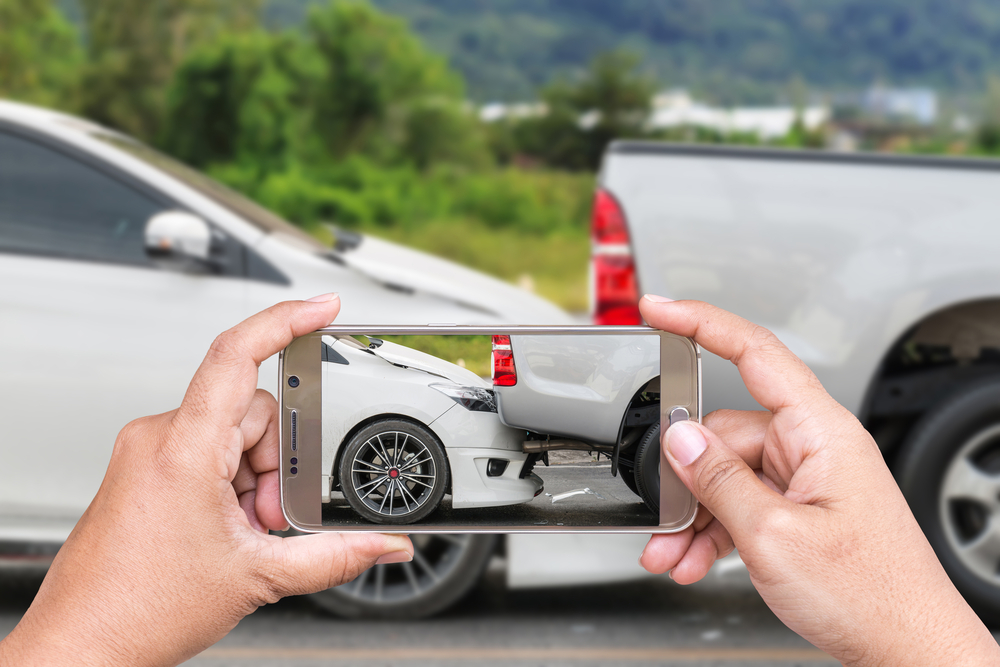Most of us have had the experience of being rear-ended in traffic. Since these are usually just minor bumps, people sometimes tend to dismiss these accidents without reporting them. This is especially true if there is no visible damage to either vehicle. However, a lack of visible damage does not rule out the possibility of hidden damage. Not all problems are easy to see, so never just assume that your car is fine after a collision. Let’s talk about the most common types of hidden damage.
1. Frame Damage
This one is obviously the most dangerous possibility. A car with a bent or broken frame is absolutely unsafe to drive. Not only does it provide much less protection against impact, but it can also throw your entire vehicle out of alignment. If you thought it was bad having a wheel or two out of alignment, imagine what happens when the whole car is warped!
When your vehicle has a damaged frame, it might even start swerving to one side. If this happens at the wrong time, it can throw you right into the other lane and right into the path of another vehicle. The worst part of all? You will have no ability to correct the situation. The only thing you can do is throw the steering wheel hard to the opposite side, which may or may not be effective. Needless to say, it’s better to just get the frame repaired or replace the vehicle.
2. Transmission Damage
Many vehicles have their transmission in the rear, or they have transmission components in the rear. Together with the frame and the engine, your transmission is one of the three most important parts of your vehicle. Your transmission uses a series of gears and chains (similar to bicycle chains) to move your car in and out of the various gears. This requires specific timing and adjustment, and a collision can easily throw that timing out of whack.
Also, if any part of the transmission system is damaged, it will likely leak transmission fluid. Without that, your transmission will not work properly and may even be ruined. When you start working all those chains and cogs with no lubrication, all that metal grinding on metal can be disastrous.
3. Hidden Fender Damage
You surely know that all vehicles have front and rear fenders, but think about this: Are they always visible? The answer is no, many modern vehicles have fenders that are hidden by panels of steel or plastic. This is done mainly for cosmetic reasons, but it does have one negative side effect: It is harder to tell when your bumper has been damaged.
A damaged fender is no joke. When a collision occurs, the front or rear fender is usually the first part to take the impact. There’s a reason why they call these things “bumpers.” So, since these chunks of steel are your first line of defense, you need to make sure that they are strong at all times. For this reason, you should always get your vehicle checked out by a certified auto body shop after a collision.
4. Electrical Problems
A minor rear-end collision can also cause problems with your vehicle’s electrical system. There is a complex network of electronic components in every modern vehicle, consisting of wires, relays, fuses, switches, and various other things. If one of these components should become detached, all sorts of problems can occur. Your electrical system powers door locks, tail lights (and all other lights), turn signals, AC, stereo, etc.
The vehicle’s electricity comes from the battery, which is charged by the alternator, which is run by a belt pulley from the engine. Alternators and batteries are usually located in the front of the vehicle, but some designers have put these components in the rear. You’ve probably known at least one person whose car battery was located in the trunk. Even in a minor collision with no visible damage, those electrical components can easily be damaged or detached.
5. Suspension Problems
When we talk about your car’s suspension system, we are mainly talking about the shocks. These are large spring-loaded rods that allow your vehicle to bounce on its wheels to some extent. This makes for a much smoother ride, and it also maximizes the friction between your tires and the road. By suspending all of the vehicle’s weight over the tires, the suspension system puts all that weight and pressure right where it needs to be. This makes your vehicle less likely to slide or slip when driving on wet/icy roads.
Naturally, a rear collision can easily cause damage to the rear wheels. If the suspension system connected to those wheels is damaged, you may not notice the effects until much later. In particular, you will probably notice that kind of damage when you hit a bump in the road or when you drive on wet/icy roads.
Conclusion
After a collision, you need to take action immediately. You’ll want to exchange information with the other driver and with any witnesses, and you’ll need to call the police and your insurance company. Once all that is done, however, your next job will be finding a good body shop in your area. Only a qualified professional can verify that your vehicle is still safe to drive. So, if you’re at that stage, you might be wondering: “Where can I find the best auto body shop near me?” To answer that question, just give us a call at (856) 218-0202.

